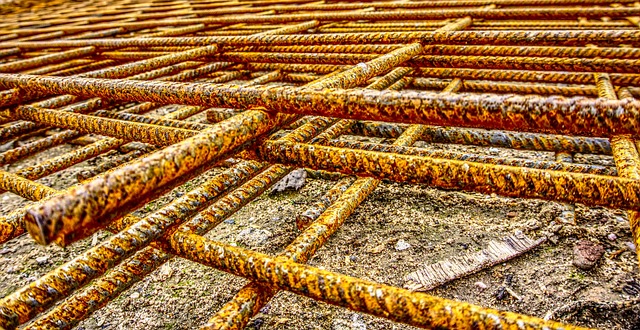Basement patching by Foundation Contractors prevents water seepage and structural damage. Basements are prone to moisture intrusion due to their location and weather exposure, leading to cracks, mold growth, and wood rot. Contractors use specialized techniques and materials, such as epoxy injections, butyl sealants, and cement-foam mixes, for effective long-lasting patches. DIY solutions can compromise foundation integrity; consult professionals for early detection and robust protection against moisture.
Basement patching is a crucial service provided by foundation contractors to address water intrusion and structural damage. This article explores why professional attention is essential, guiding you through identification of problem signs, the waterproofing patch process, materials used, benefits of hiring experts, common mistakes to avoid, maintenance tips, and successful project case studies. By understanding these aspects, homeowners can ensure their basement’s long-term protection against moisture and potential foundation issues.
Understanding Basement Patching: Why It's Essential for Foundation Contractors

Basement patching is a critical service provided by foundation contractors to address and prevent water seepage and structural damage. Basements are particularly vulnerable to moisture intrusion due to their proximity to the ground and exposure to varying weather conditions. Over time, cracks can form in the basement walls and floors, allowing water and humidity to seep in, leading to mold growth, wood rot, and other detrimental effects.
Foundation contractors employ specialized techniques and materials for basement patching, ensuring long-lasting solutions. By sealing these entry points, they not only protect the basement from further damage but also preserve the integrity of the entire building’s foundation. This proactive approach is essential for maintaining a dry, healthy, and safe living environment below grade.
Identifying Signs That Require Professional Attention

If you’re noticing persistent water stains on your basement walls or floors, cracks in your foundation that look like they’re getting wider, or signs of mold growth, it’s time to call in professional help. Foundation Contractors are the experts who can identify these subtle yet critical indicators of a bigger problem. They understand the intricate details of basement construction and have the specialized tools and knowledge needed to assess the situation accurately. By catching potential issues early, these contractors can prevent costly repairs down the line, ensuring your home’s structural integrity for years to come.
Professional attention is especially crucial if you’ve experienced recent flooding, earth movement, or if your basement has taken on a musty smell. These factors could point to more significant problems like settlement, heave, or water penetration that require advanced solutions and specialized techniques from qualified foundation contractors. Don’t delay; the sooner you address these signs, the better for both your home’s health and your peace of mind.
The Process: From Inspection to Repair

The process of patching a basement begins with a thorough inspection conducted by experienced foundation contractors. They meticulously assess the damage, identifying cracks, water stains, and other issues that require attention. This initial step is crucial as it determines the extent of repairs needed. Once the evaluation is complete, the contractors devise a tailored plan to address the specific problems, ensuring long-lasting solutions.
The repair process involves several stages. First, any visible cracks are cleaned and prepared for patching. Then, specialized materials are used to fill and seal the gaps, preventing further water intrusion or structural damage. Foundation contractors may also implement additional measures like drainage systems or waterproof coatings to safeguard against future issues. Regular maintenance and inspections by professionals ensure that any potential basement problems are caught early, minimizing costly repairs down the line.
Materials Used in Basement Waterproofing Patches

When addressing basement waterproofing patches, professional foundation contractors employ a variety of materials tailored to specific issues. Common choices include epoxy injections for small cracks and sealants made from butyl or polyurethane for filling gaps and preventing water intrusion. For larger defects, a mix of cement and foam may be used to create a robust patch that also provides insulation. These materials are selected based on the size and type of damage, ensuring long-lasting protection against moisture infiltration.
Benefits of Hiring Qualified Foundation Contractors

Common Mistakes to Avoid When Patching Basements

When patching basements, avoid common pitfalls to ensure long-lasting results. One major mistake is neglecting proper preparation; this includes cleaning and drying the area thoroughly before applying any patch. Foundation Contractors emphasize that moisture issues can weaken new patches, leading to future leaks and damage. Another error is using subpar materials or applying patches haphazardly, which can result in uneven surfaces and unsightly finishes.
Additionally, overlooking structural problems can lead to recurring issues despite successful patching. It’s crucial to have a professional Foundation Contractor inspect the basement for any underlying issues that may cause further damage. Lastly, many homeowners try DIY solutions without understanding the complexities of basement patching, which can compromise the integrity of the entire foundation.
Maintenance Tips to Prevent Future Issues

Case Studies: Successful Basement Patching Projects

Successful Basement Patching Projects: Real-World Examples
Many homeowners have benefited from professional basement patching services, leading to significant improvements in their home’s overall structural integrity and aesthetic appeal. Case studies of successful projects highlight the expertise and attention to detail that foundation contractors bring to bear on these challenging repairs. For instance, a recent project involved a historic home with a complex labyrinthine basement. The contractor addressed moisture issues, cracks, and settlement using advanced sealing techniques and specialized materials. The result was not only a dry, stable basement but also a preservation of the building’s historical character.
Another notable example is a contemporary residence where heavy rainfall led to severe water intrusion. Foundation specialists patched and sealed the entire basement perimeter, effectively halting further damage and ensuring the longevity of the structure. These real-world success stories underscore the value of professional expertise in basement patching, demonstrating how skilled contractors can transform problematic spaces into functional, comfortable areas for homeowners.
